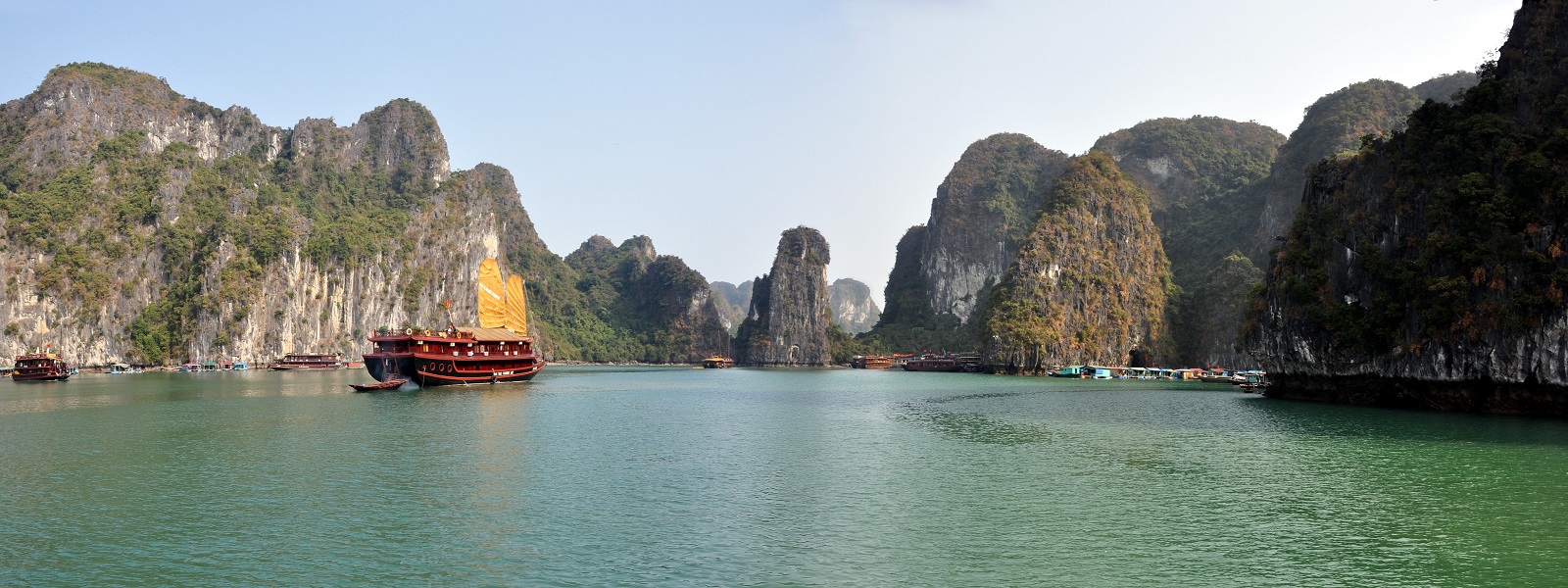
Located off the southern coast of Vietnam, the remote and utterly beautiful Con Dao Islands offer visitors a rare experience not found anywhere else in the country. Here, lush green mountains meet crystal clear waters, resulting in no shortage of land and sea activities. Trek or cycle your way through the hills for panoramic views, take a fishing trip, kayak tour or island-hop by speedboat, or try a spot of snorkeling to eyeball marine life.
The archipelago today is better known for wildlife inhabitants than for convicts, and the preservation of the Con Dao National Park means there are opportunities to spot sea turtles or the rare dugong. And if all that touring and tripping sounds exhausting, you can simply sprawl out on the white sands of a deserted beach and watch as the sun sets beyond the waves of this untouched tropical paradise
Climate:
May is the hottest month in Con Dao with an average temperature of 29°C (84°F) and the coldest is January at 25°C (77°F). The wettest month is September with an average of 250mm of rain.
Best time to travel: The best time to visit Con Dao is from October to May as the rain season starts from June to September.
Getting here: Con Dao has a small modern domestic airport. It is a 50-minute-flight from Ho Chi Minh City.
Vietnam has a tropical monsoon climate, dominated by the south or southwesterly monsoon from May to September and the northeast monsoon from October to April. The southern summer monsoon brings rain to the two deltas and west-facing slopes, while the cold winter monsoon picks up moisture over the Gulf of Tonkin and dumps it along the central coast and the eastern edge of the central highlands. Within this basic pattern there are marked differences according to altitude and latitude; temperatures in the south remain equable all year round, while the north experiences distinct seasonal variations.
In the past few years Vietnamese food has become more and more popular around the world. Food lovers may have tried the two best known Vietnamese dishes – spring rolls and bread rolls. Rice, noodles, fresh vegetable and herbs all play big roles in Vietnamese food, making it one of the healthiest cuisines in the world.
In Vietnam you’ll discover one unmistakable fact: Vietnamese people love noodles. They eat them every day, sometimes for every meal. Vietnamese noodles are made from a few basic ingredients, the most common being rice, wheat and mung beans, but a whole sub-cuisine is built on these basics.
91,500,000
Hanoi
Vietnamese
Voltage: 127V/ 220V, Frequency: 50Hz



We saw, learned, heard, tasted a lot and really got to know these 2 countries better. Thanks a lot for organizing our tour.
Mr Denis
My husband and I are now home and we'd like to thank you for an extraordinary trip in Vietnam and Cambodia. Thu, you did a terrific job in planning it and all details were perfect and everything happened like clockwork. We loved...
Fran O’Connell
We just got back. I can't begin to tell you how wonderful it was. We loved every place we stayed. You're a gem. As to the countries themselves: I was totally thrilled, fascinated, absorbed. Hope to do another trip to the...
Loraine F. Gardner
I wanted to specifically tell you how wonderful my tour guide Tien from Hue was. We were lucky enough to have him for Hue, Danang and Hoi An. He was sweet, caring, knowledgeable, dedicated and passionate about his country. I felt...
Dr. Halli Zung